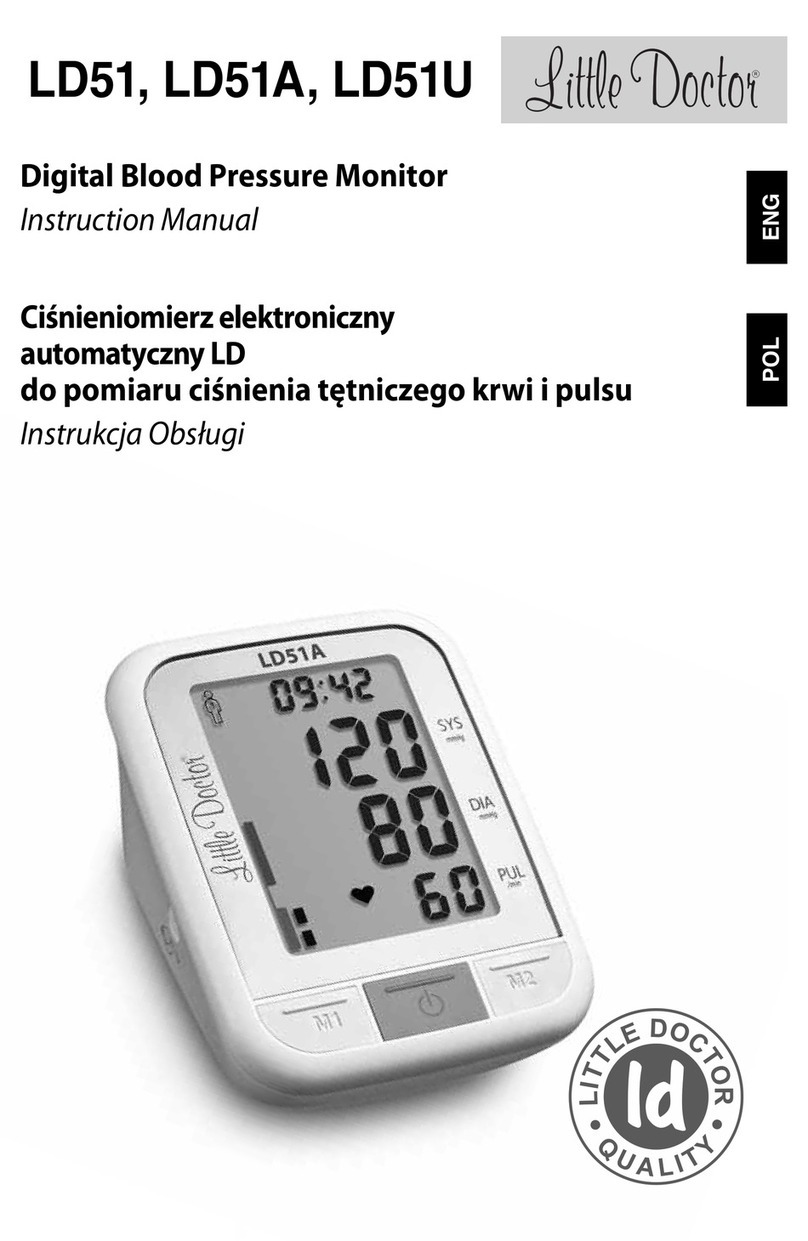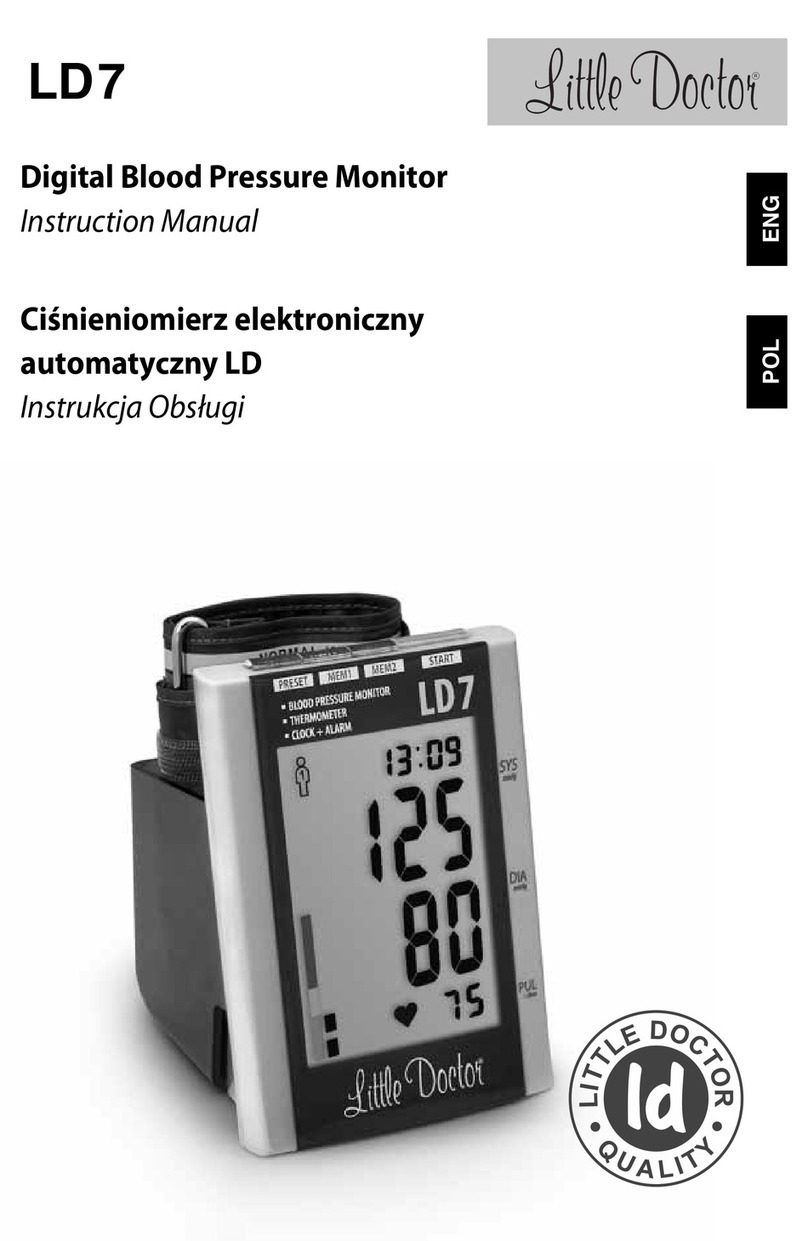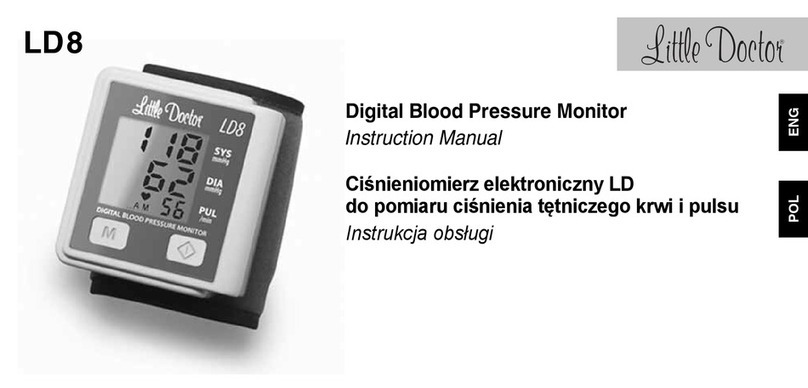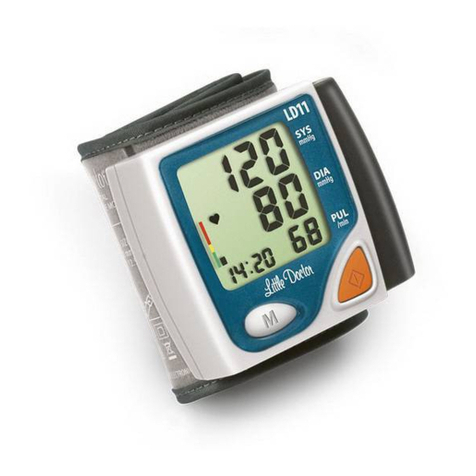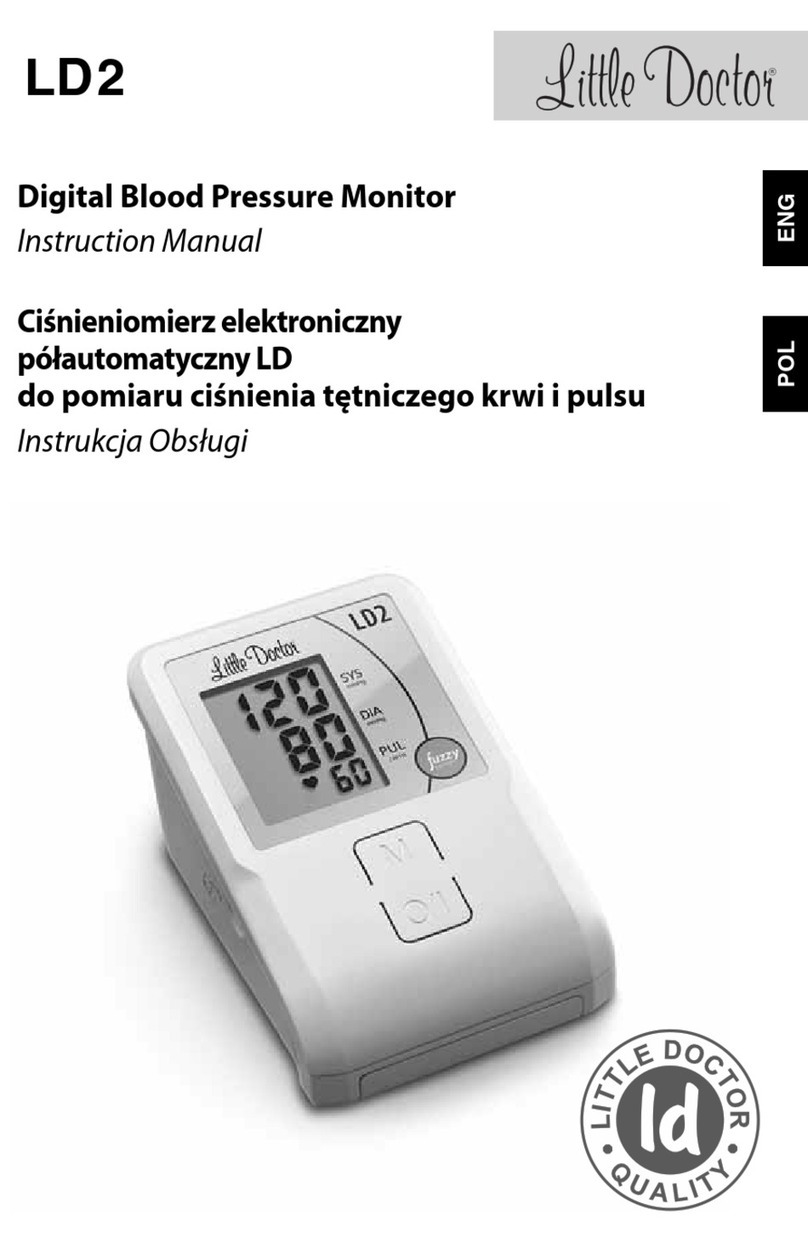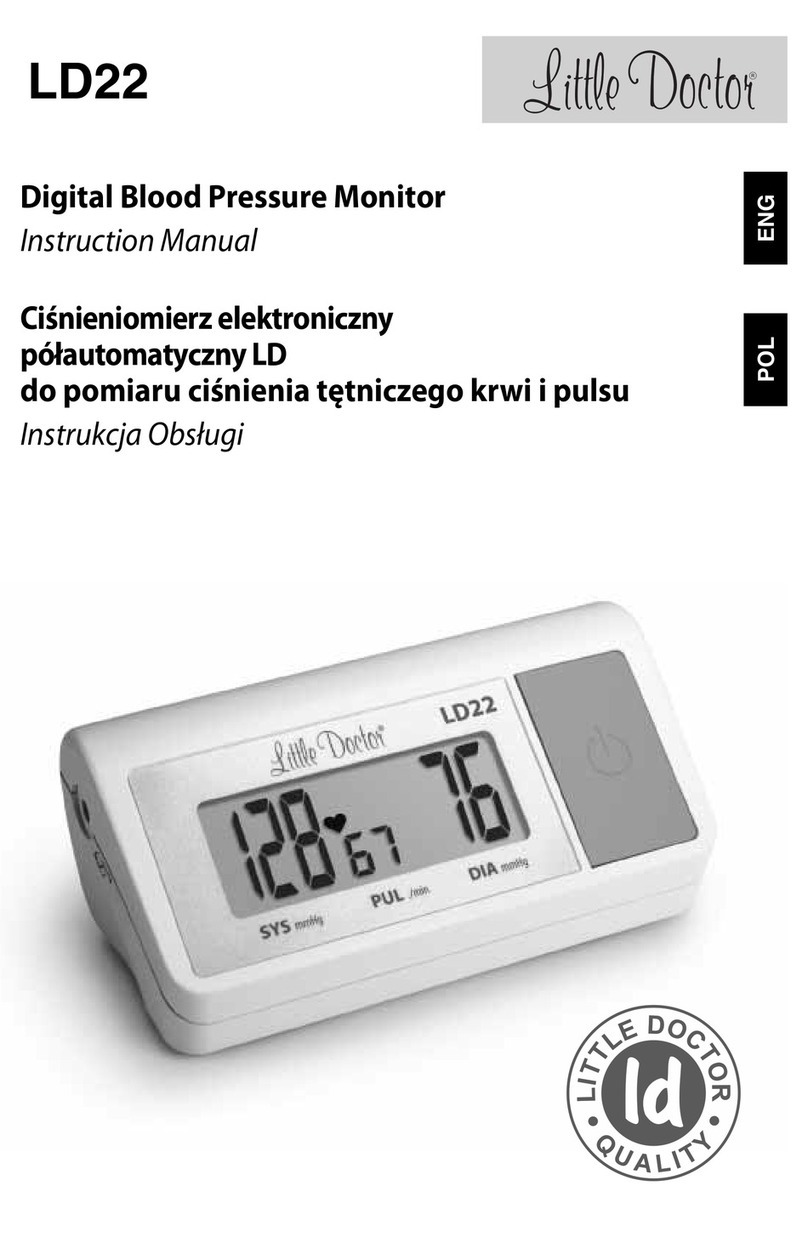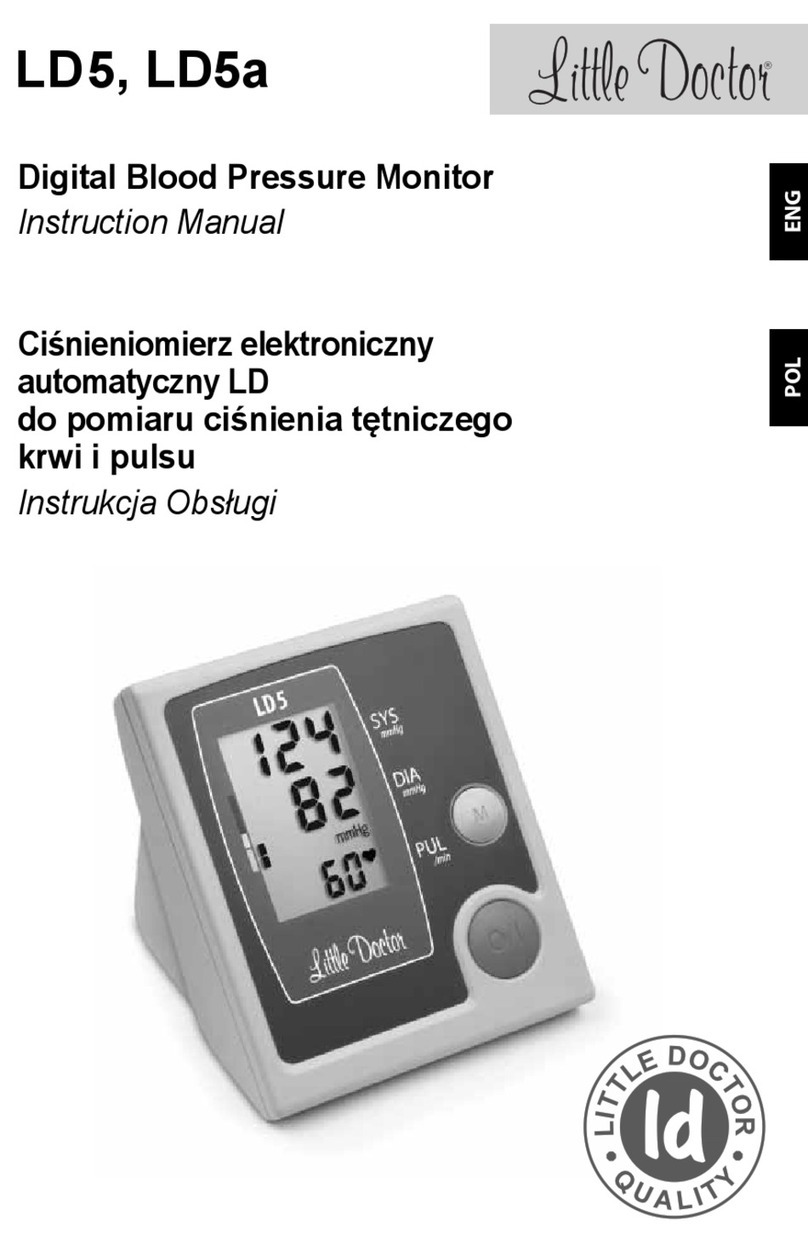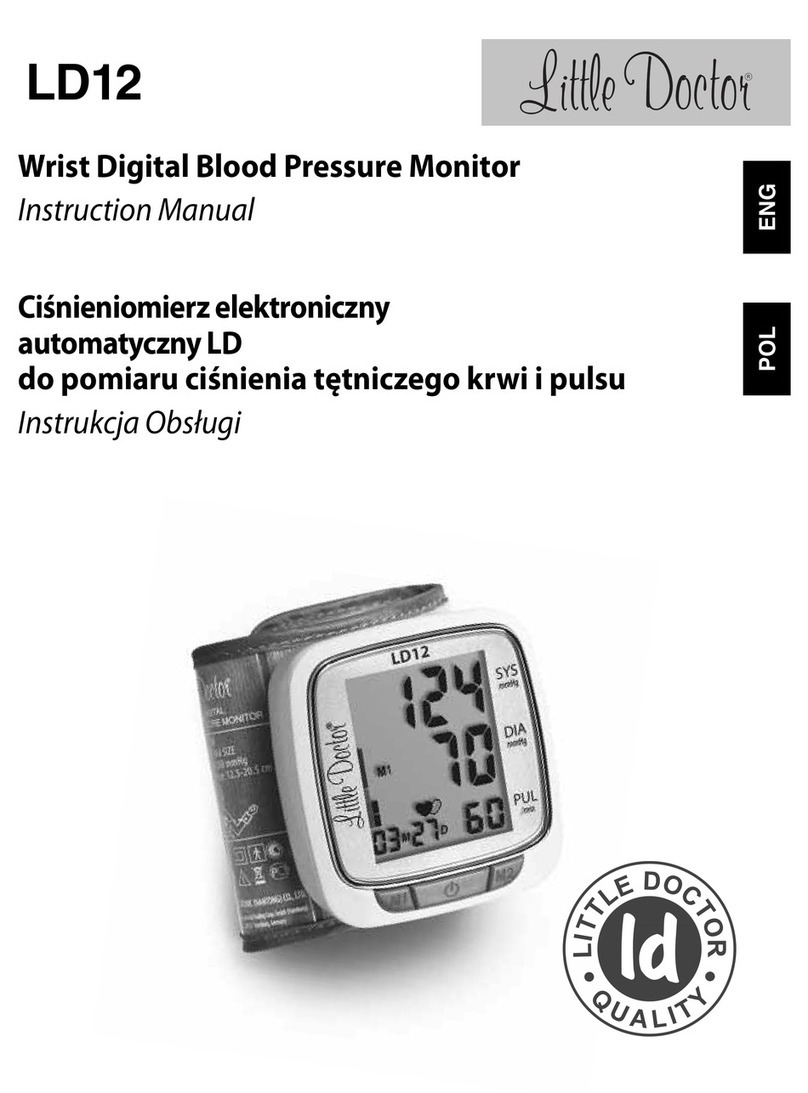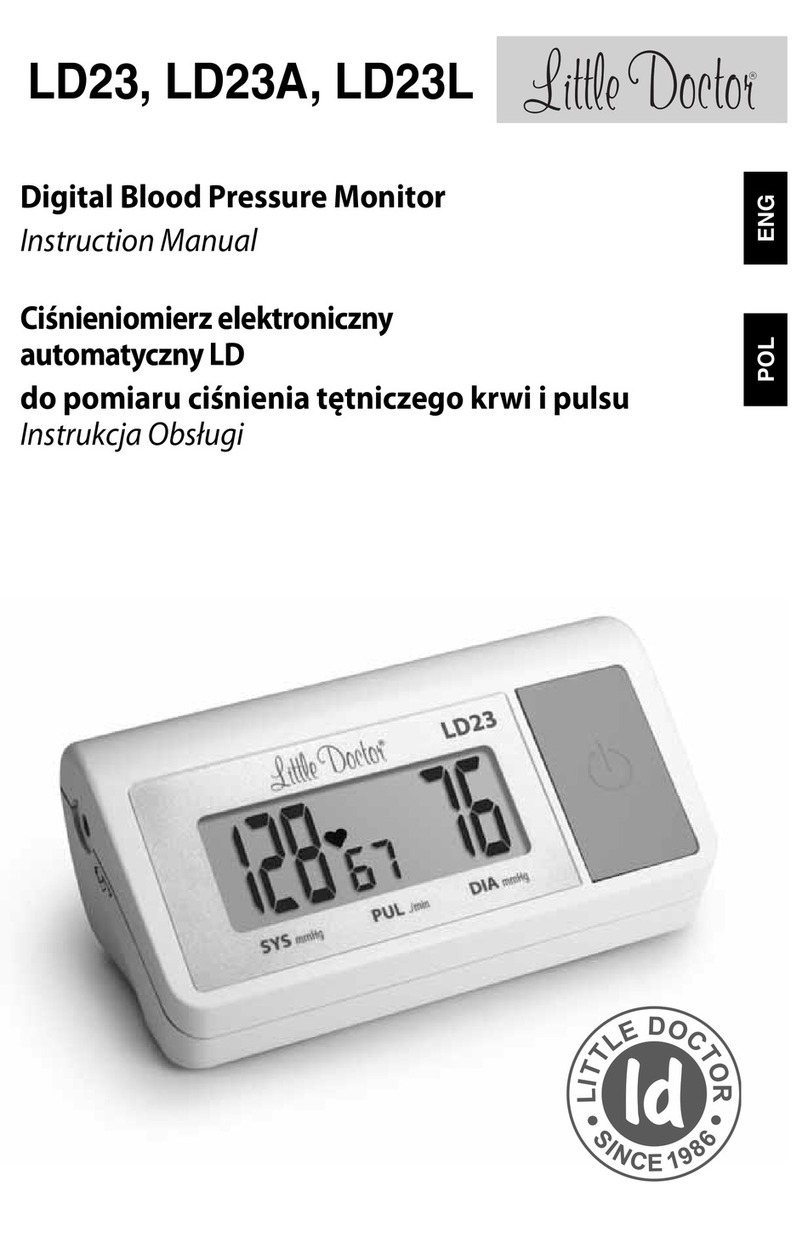6
ENG
5. On the fixed cuff the sign «INDEX» should point to the area
«NORMAL» (fig 7). It means that the cuff is chosen correctly and fits
the size of your upper arm. If the sign points to the area marked «
» or to the left, the cuff is too small and the readings will be
higher. If the sign points to the area marked « » or to the right,
the cuff is too large and the readings will be lower.
Fig. 7
6. If the arm has a conic form, the cuff should be put on
with a spiral movement as shown in the fig. 8.
Fig. 8
7.
If the rolled-up sleeve squeezes the arm interfering
with free blood flow the Device may give inaccurate
figures not corresponding to your actual blood
pressure
(fig. 9)
.
Fig. 9
8.
Place stethoscope head so that it was located in
depression, somewhat higher than elbow bend (Fig. 4). If
You use the device with built-in stethoscope (for models
LD-60 and LD-71A), to reach better auscultation of pulse
on full hand, the cuff may be turned round the hand
approximately by quarter of circle (60-90˚) in such way that
stethoscope head would be positioned on inner side of
hand (more close to the body).
Fig. 10
9. Pressure shall be measured in sitting or lying position of human. IN SITTING
POSITION WATCH THAT PART OF HAND WITH CUFF WOULD BE LOCATED AT THE
LEVEL OF HEART, AND HAND WOULD BE FREELY LOCATED ON THE TABLE AND
WOULD NOT MOVE
.
MEASUREMENT PROCEDURE
1.
Insert metal tubes of stethoscope into ears. Close air valve on air pump,
having turned it clockwise. Squeezing air pump, pump up the cuff,
listening to pulse by stethoscope. After You stopped to listen to pulse,
pump up the cuff by 30 mm Hg more
.
2.
Slowly opening air valve, turning it counterclockwise, bleed down pressure
in the cuff. Watch that pressure in the cuff would fall down at speed 2-4 mm
Hg per second. This is necessary to get accurate result.
3.
As soon as You hear weak pulse beats, memorize manometer reading. This
is Your systolic (upper) arterial pressure
.
4. Pressure in the cuff is continuing falling down at the same speed (2-4 mm Hg
per second). You are continuing to listen to pulse. Sounds which You hear will
change. Unlike the first beats, they will become softer, resembling rustling.
At the moment when You practically stop seize pulse, memorize manometer
reading. This is Your diastolic (lower) arterial pressure.
